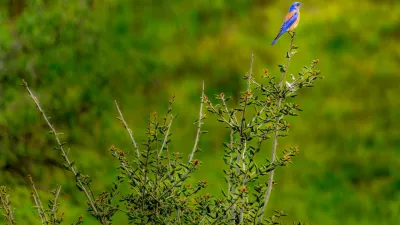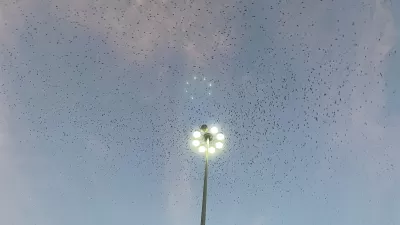The demilitarized zone dividing North and South Korea has become one of the world's most important wildlife conservation sites.
"Established after the 1953 Korean War cease-fire (the two nations are technically still at war), it is the most dangerous and heavily militarized border in the world."
"The de facto wildlife preserve encompasses 390 square miles of diverse terrain virtually untouched by human development for 55 years. Now, as this accidental Eden faces major development pressures, a growing contingent is pushing for its establishment as a transboundary nature park – which could also be a step toward peace between the two Koreas."
"'This strip of land contains almost every type of ecosystem you can imagine,' says Alan Weisman, author of "The World Without Us." 'It has inadvertently become one of the most important wildlife conservation sites in the world.'"
"Urban sprawl in the South is the biggest threat to DMZ wildlife. For decades, South Korea kept a 3- to 12-mile-wide buffer along the 155-mile length of the DMZ. The low-population Civilian Control Zone (CCZ) is an invasion precaution, but the easing of tensions in the last decade has led to major development there."
FULL STORY: Korean demilitarized zone now a wildlife haven

Planetizen Federal Action Tracker
A weekly monitor of how Trump’s orders and actions are impacting planners and planning in America.

Maui's Vacation Rental Debate Turns Ugly
Verbal attacks, misinformation campaigns and fistfights plague a high-stakes debate to convert thousands of vacation rentals into long-term housing.

San Francisco Suspends Traffic Calming Amidst Record Deaths
Citing “a challenging fiscal landscape,” the city will cease the program on the heels of 42 traffic deaths, including 24 pedestrians.

Amtrak Rolls Out New Orleans to Alabama “Mardi Gras” Train
The new service will operate morning and evening departures between Mobile and New Orleans.

The Subversive Car-Free Guide to Trump's Great American Road Trip
Car-free ways to access Chicagoland’s best tourist attractions.

San Antonio and Austin are Fusing Into one Massive Megaregion
The region spanning the two central Texas cities is growing fast, posing challenges for local infrastructure and water supplies.
Urban Design for Planners 1: Software Tools
This six-course series explores essential urban design concepts using open source software and equips planners with the tools they need to participate fully in the urban design process.
Planning for Universal Design
Learn the tools for implementing Universal Design in planning regulations.
Heyer Gruel & Associates PA
JM Goldson LLC
Custer County Colorado
City of Camden Redevelopment Agency
City of Astoria
Transportation Research & Education Center (TREC) at Portland State University
Jefferson Parish Government
Camden Redevelopment Agency
City of Claremont





























